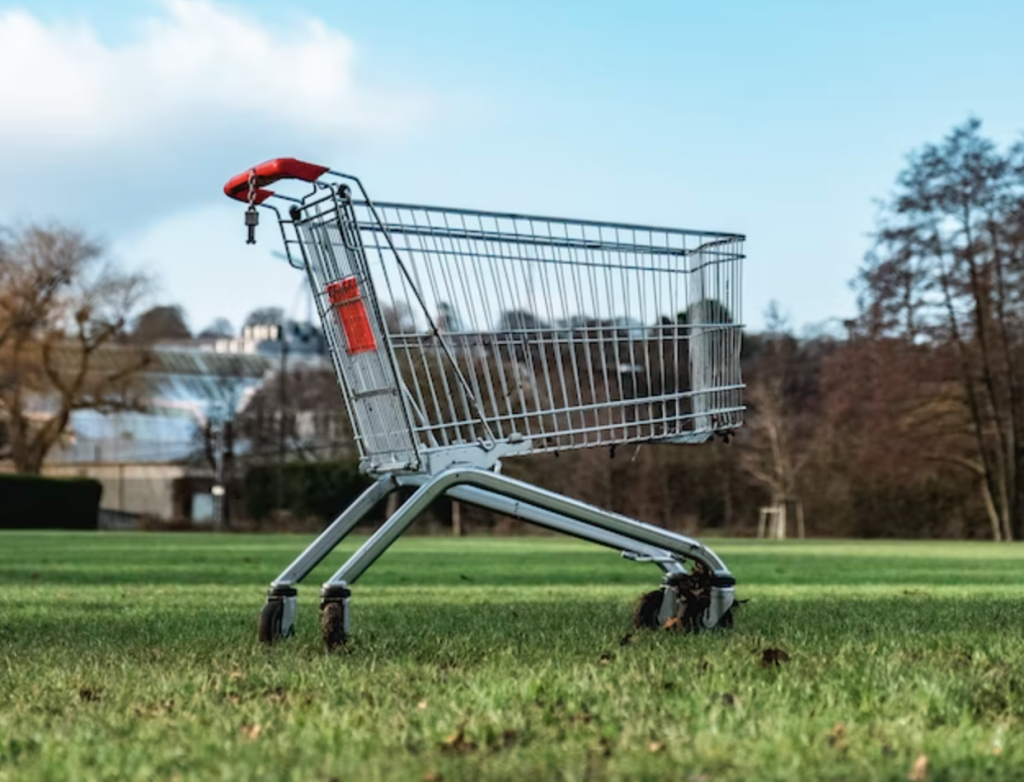Why Shopping Carts Are Going Missing In Record Numbers
Missing shopping carts are a growing problem, but the real issue is that those missing carts can cost taxpayers upward of $70,000.
This article is more than 2 years old

Every few months or so, an online debate rages over an odd topic – shopping carts. Typically, the conversation revolves around who does (and doesn’t) return their carts to the store or corral. But it turns out that shopping cart woes extend beyond questions of common courtesy, as missing shopping carts cause bad financial news for companies.
We have all had the frustrating experience of a runaway cart bumping into our car in high winds. And it is easy to spot them throughout town, far from their home store, no matter where you live. Whether those rogue shopping carts wandered away on their own during a storm or were moved by someone really doesn’t matter.
Abandoned shopping carts are an eyesore. But the problem is even deeper than that. Carts that leave their store or origin have to get collected by someone.
Sometimes the responsibility and cost fall to the retailer. And sometimes, taxpayers foot that collection bill. While that news may surprise many people, it is easy to dismiss.
After all, it can’t cost that much to collect shopping carts, can it? The reality is that those store staples cost much more to round up than most people imagine. According to CNN, “Fayetteville, North Carolina, spent $78,468 collecting carts from May 2020 to October 2022.”
But they aren’t the only municipality dealing with a shopping cart problem. Santa Fe paid $47,000 for a similar period. The number of shopping carts collected in both areas was in the thousands.
“There is no national data on shopping cart losses, but US retailers lose an estimated tens of millions of dollars every year replacing lost and damaged carts, say shopping cart experts.” And that number is climbing rapidly. Over the last few years, an increasing number of shopping carts is disappearing from retailers.
There are multiple factors behind the rise in shopping cart losses. Many people in urban areas use the carts to haul their groceries home and then leave them around the neighborhood. Others steal the carts to repurpose them as scrap metal.
Of course, sometimes a heavy storm pulls unsecured carts away from parking lots and corrals. But perhaps the largest factor is the drastic rise in homeless populations nationwide. Many homeless individuals use shopping carts to store their belongings or to include them in shelter construction.
Cities have begun taking drastic steps to try and hold retailers and shoppers accountable for shopping carts. Dartmouth, Massachusetts, charged Walmart $23,000 after the city collected and stored hundreds of shopping carts for two years. And Ogden, Utah, plans to fine anyone possessing a cart and charge the retailer for any shopping carts the city collects and stores.
Additionally, retailers have stepped up to the plate. Many have invested in new technology that locks a shopping cart’s wheels if it is taken too far from the store. Of course, these steps also ensure the company doesn’t unnecessarily throw money away chasing after missing carts.
Most US shoppers likely understand these steps and don’t mind the measures. However, there is also a coin-lock system (which is all the rage in Europe) that may not be welcome news. It requires a $0.25 deposit before shoppers can get a cart and has already rolled out at multiple Aldi locations.



